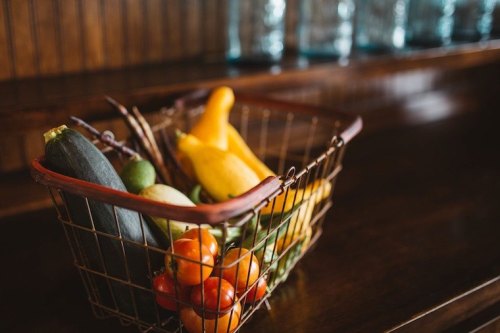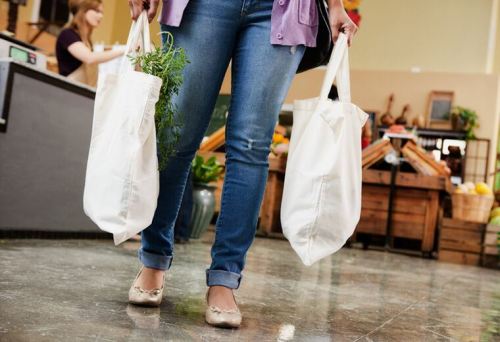There are so many different kinds of health disparities in this country, many of which break along sharp socioeconomic lines. And one of the most obvious—and potentially devastating—is access to nutritious food.
On the one hand, you’ve got people stocking up on tasty (but pricey) artisanal nut milks and splurging on $20 smoothies. Then there are people who have to work really damn hard to simply fill their bellies with nourishing foods—like the 45-plus million people who rely on SNAP, or food stamps, as they used to be known.
In 2015, Gwyneth Paltrow made waves for doing what she dubbed the “$29 Food Stamp Challenge,” an idea originated by the Food Bank For New York City that invited people to eat on only about $4 a day, or what they call a food stamp budget. Though Paltrow took some heat for her privilege (and there have been some questions about whether that number actually represents a typical SNAP budget) the experiment definitely helped draw attention to a pressing public health question: Is it really possible to eat healthy on a super limited budget?
As Well+Good’s food editor, I decided to put my money where my superfood-loving, whole grain-eating, half-marathon-training mouth is and aim to spend about $4 a day on the healthiest meals possible.
Here’s what happened when I tried to eat well on just $29 for one full week’s worth of meals.

The game plan
Before heading to the grocery store (AKA land of temptation), I called up Farmbox Direct founder Ashley Tyrner, who was herself on food stamps for a bit before she started the fresh produce delivery service. “My husband left me when I was pregnant,” she says. “I was only given $260 a month for food [for my family], so I definitely had to get creative.”
Tyrner told me to buy foods with broad, repeat potential, like brown rice, beans, chicken, lettuce, and avocados. Her thinking? I could have chicken and rice for dinner, then use it in my salad for lunch the next day. We also talked about the importance of prepping ahead of time, which is crucial when hunger strikes and there’s no wiggle room in the budget. Like, at all.
With that in mind, I went to the store. Normally I do my shopping at Whole Foods, but in an effort to be more cost-effective, I went to a less expensive chain. Organic eggs, one avocado, brown rice, and a bag of three romaine lettuce hearts set me back $12.50. When I got to the meat aisle, the organic chicken was almost double the price of non-organic, so I went with three thinly sliced, non-organic chicken breasts for $3.76.

Making compromises
One of the challenges of shopping at budget grocery stores is that sometimes they just don’t have a lot of great options. Tyrner suggested eating bananas and almond butter for breakfast and snacks, which made me think that this experiment would be way tastier than I first imagined—but the first store I tried didn’t have almond butter (and only had rotten bananas), and ditto for the second store.
It reminded me of Thrive Market’s campaign highlighting the importance of being able to use food stamps online, because for many, affordable, fresh produce is hard to come by. It’s another huge reason why Tyrner launched Farmbox Direct. “A lot of people don’t know that 700,000 people in New York City are living in a food desert,” she says.
I did eventually find almond butter—for $12. Twelve. Dollars. I literally stared at the jar for a full 60 seconds wondering why (why?!) the peanut butter next to it was less than half that price. It sounds silly, but I wanted the almond butter. I consider it to be the healthier option, I don’t think it should be a luxury, and when you take into consideration the number of servings in the jar it’s not all that expensive—but there was just no way I could spend nearly half my week’s food budget on one single jar. Frustrated, I left without buying either.

My meals
Because of the almond butter debacle, I ended up eating just a plain banana for breakfast for much of the week, which was a misstep that definitely left me hungry by lunch. But for my other meals, I fared better. On Sunday night I meal-prepped, making chicken, brown rice, and some frozen veggies that I already had in the freezer for dinner. I also prepped a salad for the next day with lettuce, chicken, and avocado. Counting a portion of the $6 bag of frozen veggies, the cost of my dinner came to $4. And the price of my three-ingredient lunch? About $2.90.
Monday, I made chicken and rice again for dinner, but added some salsa I already had in the fridge (price: $3.50). This meal came to roughly $2.50 a serving—and I basically did a repeat of everything on Tuesday. By Wednesday, I was out of chicken—and admittedly feeling a bit sick of rice and salad. I still had enough money to go buy more meat, but I was too tired after work to grocery shop and cook. So instead, I made a sad dinner of eggs and avocado and prepped an equally sad salad for the next day, filled with lettuce, the last of my avocado, and brown rice. Needless to say, this wasn’t exactly #foodporn bait.
I’ll admit it … after three meals, I was so sick of shrimp I threw one-third of it out, untouched.
Thursday, I went back to the store and used the rest of my food money on chickpeas, taco shells, and shrimp (I wanted salmon but it was double the price). It got me through the rest of the week, along with the brown rice, eggs, and salsa (again). I’ll admit it though: After three meals (one dinner and two lunch salads), I was so sick of shrimp, I threw one-third of it out, untouched.
Also, none of these meals were huge. Tyrner talked to me about the importance of really keeping my serving sizes in check to help make everything last all week. It turned out to be crucial in stretching my budget—but tough when it came to fueling my busy lifestyle (which, in addition to work also include training for a half-marathon).

The final verdict
Looking at my food diary at the end of the week, I realized that for all my careful calculations, I still blew my budget by roughly $10. And that didn’t even count the morning I succumbed to spending $5.65 on an almond milk latte. (I know!) I also said “no” to going out altogether—even $3 PBRs weren’t cheap enough. I mention it because it’s a reminder of how a really limited budget can affect all aspects of your health, including social interactions and mental well-being.
So can you eat healthy on a food stamp budget? Some people are experts at making delicious, nutritious meals with very little money, like Budget Bytes blogger Beth Moncel. I clearly am not. But even if you’re creative and resourceful, eating healthy on so little requires meticulous planning and meal prep—often when you’re exhausted, which makes it even harder.
Even when you’ve mapped out your meals, the grocery store won’t always have what you need—a challenge the millions of people living in food deserts can attest to.
And that’s not the only challenge: Some healthy foods are just going to be out of the question, like the almond butter and salmon I couldn’t swing. And then even when you’ve mapped out your meals, the grocery store won’t always have what you need—a challenge the millions of people living in food deserts can attest to.
So overall, I’d say yes, it is possible to eat well—but not as well as you can when money isn’t so tight. It’s also undeniably harder.
The food gap is a complex issue, and “healthy food” means different things to different people (some don’t consider anything non-organic or containing GMOs to be okay, which definitely complicates things). My one-week experiment by no means makes me an expert, but it did help open my eyes. Now, more than ever, I’m aware of how important it is to find solutions to help everyone access the healthy foods we all deserve.
Originally published on August 21, 2016; updated on July 27, 2018.
Is Whole Food’s new 365 offshoot the answer to buying healthy, budget-friendly foods? Here’s everything you need to know. And if you feel passionately about being able to use food stamps online, sign Thrive Market’s petition.
Sign Up for Our Daily Newsletter
Get all the latest in wellness, trends, food, fitness, beauty, and more delivered right to your inbox.
Got it, you've been added to our email list.











